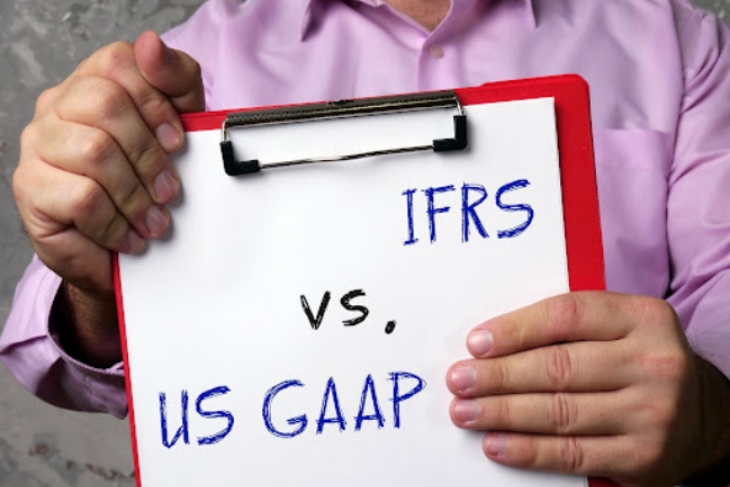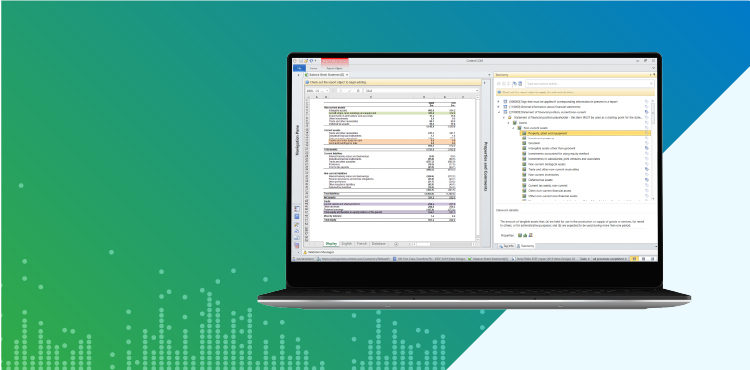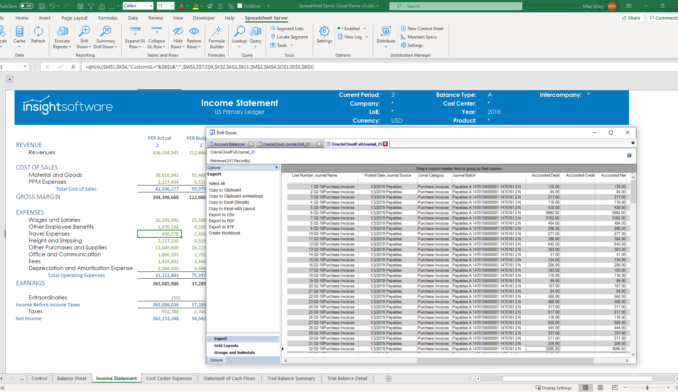Making the Move From GAAP to IFRS Reporting: 3 Tips for Success

We live in an increasingly globalized world in which more and more companies are transacting business in multiple currencies. Finance teams must often harmonize and consolidate financial reports across multiple legal entities, often based in different countries and operating with different functional currencies. Nearly two decades ago, the International Accounting Standards Board (IASB) published the International Financial Reporting Standards (IFRS), designed to provide a common set of principles and practices for financial reporting for companies around the globe.
The European Union (EU) was quick to adopt IFRS, and in the ensuing years, China, Japan, Canada, Korea, and India all announced plans to move closer to IFRS, and eventually to make a wholesale transition to the new standards. Adoption has proceeded apace, with 120 countries now having chosen IFRS as their standard for corporate financial reporting.
Key Differences between IFRS Reporting and GAAP Reporting
Generally Accepted Accounting Principles (GAAP), which is prevalent in the United States, has evolved into a relatively explicit set of rules that determine how to account for specific types of transactions. In some cases, this has led managers to “game the system” by structuring transactions in ways that will allow them to achieve better financial results.
IFRS, in contrast, focuses more on general guidelines and principles intended to inform managers’ judgment with respect to specific types of transactions and how to handle them. Although this is the basis for general distinction between the two sets of standards, there are, in fact, some specific differences that are worth noting.
Inventory Valuation
GAAP reporting allows for the use of “last in, first out” (LIFO) to value inventory, but IFRS reporting does not. The rationale for using LIFO is that the cost of goods sold will more accurately reflect the cost of replacing inventory on hand, especially where prices may be particularly volatile. However, LIFO may lead to lower reported income, and it may result in a less accurate balance sheet.
Valuation of Fixed Assets
GAAP dictates that you carry fixed assets at their original cost, net of accumulated depreciation. Under IFRS, you may revalue fixed assets at a higher cost. A company that bought land and a building several decades ago, for example, might be carrying the building at a current book value of zero, despite the fact that it has considerable value. If the value of both land and building have appreciated–as is almost certainly the case–then IFRS would allow you to recognize the increase in value, resulting in a more accurate balance sheet valuation.
Reversal of Write-Downs
Under GAAP, assets that you “write down” due to a decrease in value may never be written back up. In other words, a company may not recognize a subsequent rebound in asset value. Under IFRS, the reversal of write-downs is permitted. Again, this results in more accurate balance sheet valuations than the GAAP approach.
Development Costs
GAAP dictates that you should expense development costs at the time that you incur them. IFRS allows you to capitalize certain development costs, then amortize them over a period of time. While the GAAP position is conservative and prevents companies from deferring excessive expenses, the proponents of IFRS argue that this change more accurately reflects the distribution of development expenses over time.
Although there are many other differences between GAAP and IFRS, these highlights provide a general idea of the type of thinking that distinguishes the two bodies of standards.
The goal of the IFRS standards is to provide greater transparency for investors, regulators, and other stakeholders. Where GAAP tends to be very rules-based and often leans toward the most conservative interpretation of each financial transaction, IFRS is aimed at producing financial statements that more accurately reflect current valuations and performance over time. Many companies can (and will) continue to report under both sets of rules to meet regulatory requirements and provide meaningful financial reports that you could readily compare to those of prior years.
How can you successfully navigate the transition from GAAP reporting to IFRS reporting? Here are some tips for success.
Success Tip 1. Plan Ahead for the Transition
Making the transition from GAAP to IFRS is a considerable undertaking. While there are important accounting principles of which to be aware, moving to a new set of reporting standards has much broader implications. Companies should begin by understanding IFRS 1 (First-time Adoption of International Financial Reporting Standards), which sets forth requirements for entities using IFRS for the first time.
You’ll need to plan for a transition date, review and modify accounting policies and practices, determine which policies should be applied retroactively to prior years’ financial statements, and more. There may also be implications for business processes, including the need to collect and retain information for IFRS disclosures. You may need to modify internal information systems as a result.
Success Tip 2. Educate Stakeholders
It’s critical that people throughout your organization understand how IFRS may affect them because the transition to new financial reporting standards may impact business processes. For accounting staff in particular, it will be important not only to understand the implications of the change, but also to thoroughly consider the impact, both upstream and downstream of the finance department.
Executive management, likewise, must understand the implications of the transition to IFRS. The new accounting standards could result in very different performance metrics for your organization. While financial markets are generally well-versed in the differences between GAAP and IFRS, some audiences may be less aware of the implications. If top management within each business unit is incentivized on overall profitability, for example, then the transition to IFRS could impact bonus payments in unexpected ways.
Success Tip 3. Put the Right Tools in Place at the Beginning
Finally, it’s essential that you put the necessary tools in place at the beginning of this process so that the transition can happen smoothly. As with any transition to new systems and processes, IFRS adoption may encounter speed bumps along the way that render the entire process more challenging. If effective and flexible reporting mechanisms are in place (and fully operable) before your move to IFRS, you’ll stand a significantly better chance of getting through the process without errors and oversights.
At insightsoftware, we’ve been helping organizations like yours produce better, faster, more accurate results for over three decades. We provide solutions for financial reporting, executive dashboards, close and consolidation, planning and budgeting, and equity management. To learn more about how insightsoftware can help you, request a free demo today.










